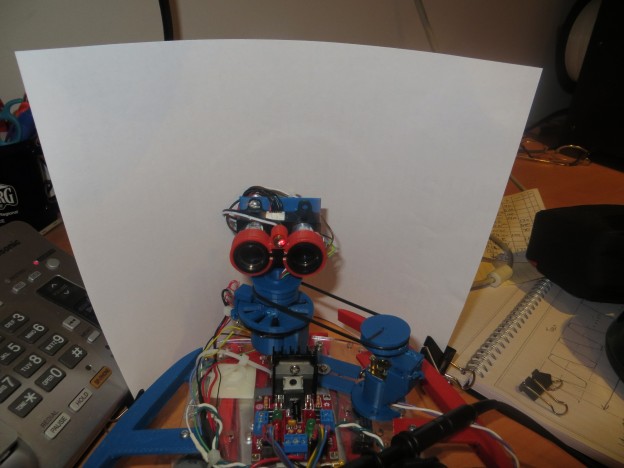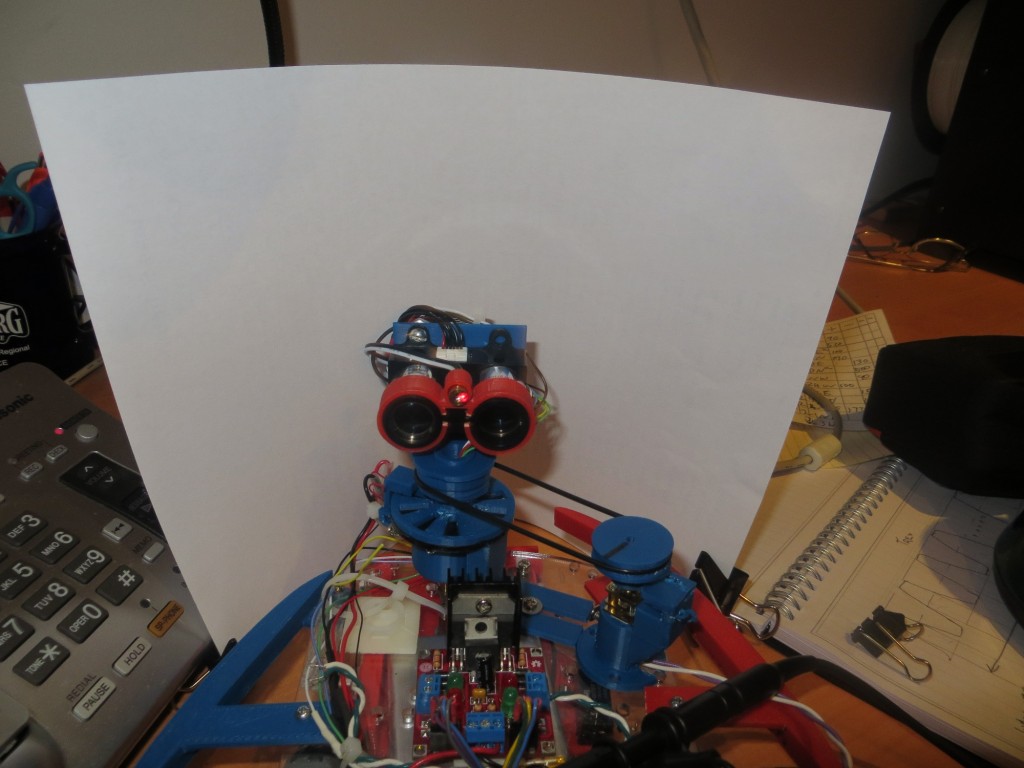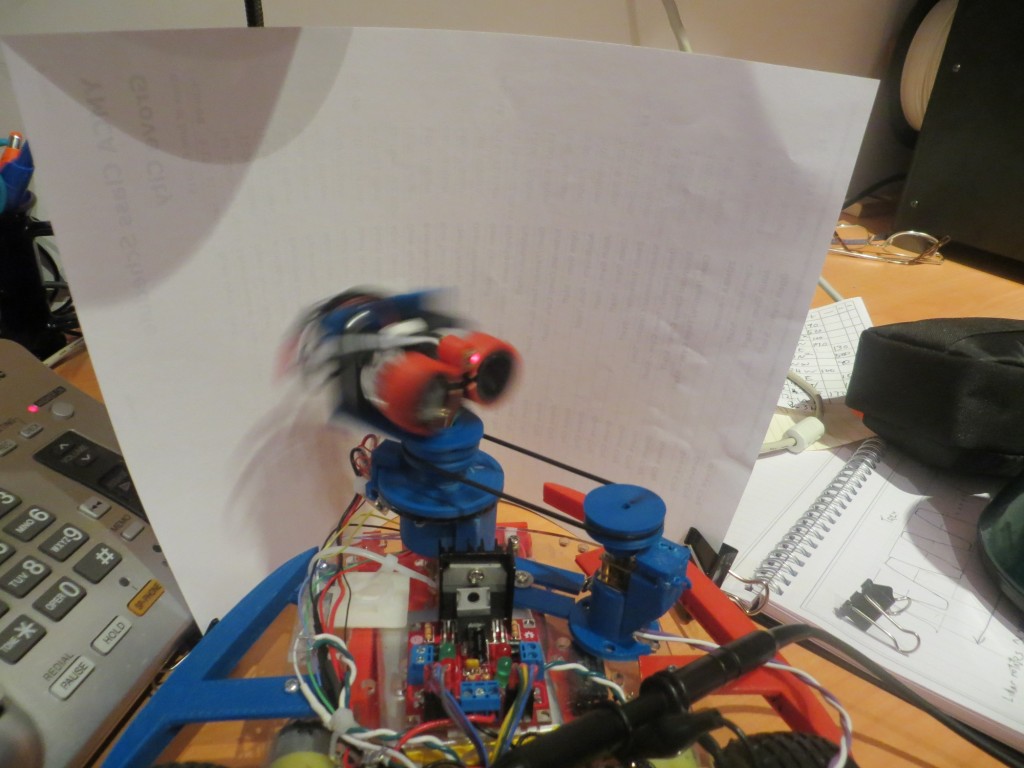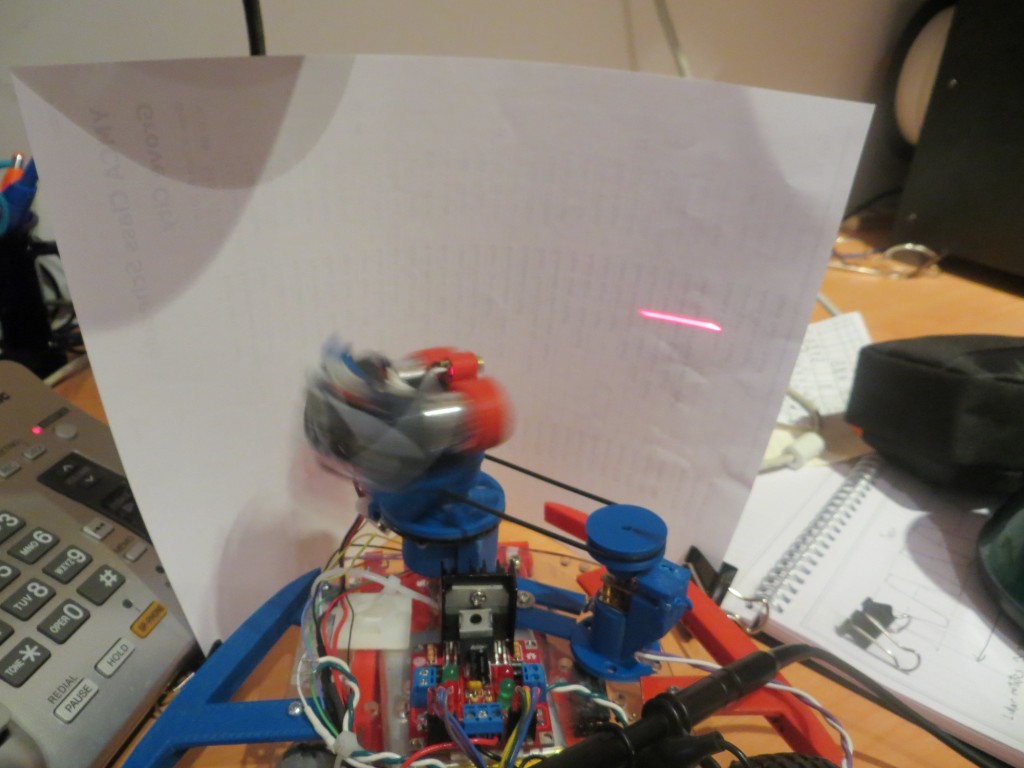Posted 6/20/15
In my last post (Lidar-Lite Gets it’s Own Motor), I discussed how I might test the new LIDAR installation, and one of the options was to mount a visible laser diode on the LIDAR, to act as a pointing reference. This post shows some results from that effort.
First, I used TinkerCad and my trusty 3D printer to design and fabricate a mount for the laser diode. The collar rings are spring-loaded onto the LIDAR optical tubes, with the laser diode mounted on the LIDAR’s central axis, as shown below:
Next, as an initial feasibility test, I connect the laser diode power line to a digital output that toggled on/off at each successive interrupt signal from the LIDAR tach wheel. These interrupts occur at approximately 25-35 msec intervals, so I was curious to see whether or not such a short laser pulse would be visible. To answer this question, I mounted a piece of paper in an arc around the LIDAR/laser diode unit, and watched – sure enough, the laser pulses were visible!
The following shots show a) the LIDAR pointing toward the camera with the laser ON; b) the LIDAR pointing toward the paper with the laser ON; c) a movie of the operation.
As a further test, I modified the test program to only enable the laser diode for the 10 msec period immediately after index plug detection, and then manually rotated the LIDAR mount relative to the tach wheel so the LIDAR unit was pointing (more or less) straight ahead when the interrupt at the end of the index plug occurred. If everything was working properly, I should see a single 10msec laser pulse at the same spot on the paper every revolution. The following short movie shows the result
From the testing so far, two things have become clear:
- The visible laser diode is an effective tool for visually refrerencing the LIDAR’s look direction under rotation
- Laser pulses as short as 10msec can be easily detected by eye on a suitable target in typical office lighting, at least for relatively short ranges. Longer ranges can be achieved by simply turning off the lights in the room.



